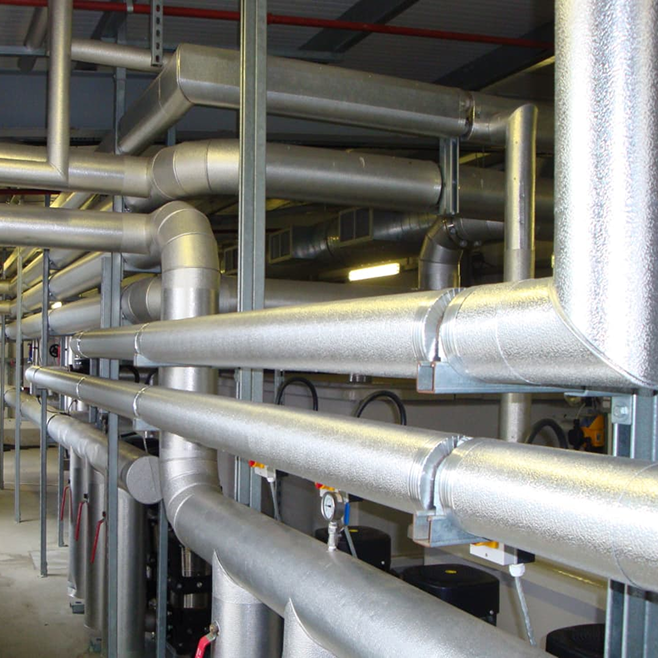Engineering Resilience: Designing Pipework That Lasts
Most people don’t notice the pipes snaking through a factory until something goes wrong. A small leak, a blocked joint, or a misaligned run can quietly halt production, compromise quality, and send costs climbing.
Pipework is far more than tubing connecting machines. It is the hidden backbone of temperature control, silently governing the flow of fluids, the consistency of heat, and the reliability of every process. Its design, material, and installation dictate whether production hums along or stumbles under preventable stress.
When Pipework Fails
In a plastics moulding facility, a subtle kink in a pipe can create uneven heating. Moulded parts emerge warped or brittle, wasting materials and frustrating operators. In a food-processing line, a blocked section can cause chocolate to seize or candy to fail to set, silently eroding productivity and quality. Even in pharmaceuticals, a poorly supported pipe may cause inconsistent flow, threatening sterility or precision.
These failures rarely make headlines, yet their ripple effects are felt everywhere: emergency maintenance, lost hours, wasted materials, and anxious teams scrambling to identify the root cause.

Designing for Resilience
Resilient pipework begins with material choice. Stainless steel, copper, or specialised alloys, each have unique properties, corrosion resistance, thermal conductivity, durability under pressure. Selecting the right material for the medium, temperature range, and environment is essential.
Layout is just as critical. Pipes that twist unnecessarily or are hard to access create stress points and inefficiencies. Thoughtful design ensures fluid flows smoothly, pressure is maintained, and maintenance is straightforward. At Tool-Temp, our in-house design engineers oversee every system, combining experience with precision to ensure each layout is optimised for performance, durability, and ease of service.
Expansion and flexibility are subtle but crucial considerations. Pipes naturally expand and contract with heat; without loops, joints, or supports to absorb movement, fatigue and leaks become inevitable.
And maintenance is never an afterthought. Accessible valves, modular runs, and strategically placed monitoring points allow routine checks and repairs before minor issues escalate into major problems.
The Hidden Value of Engineered Pipework
Well-designed pipework delivers more than reliability:
- Reduced emergency callouts: Fewer unexpected stoppages and quicker problem resolution.
- Energy efficiency: Smooth flow and minimal pressure loss lower energy use.
- Extended lifespan: High-quality materials and thoughtful design protect your investment.
- Safety and confidence: Operators can trust the system, reducing stress and operational risk.
Pipework might not be the most visible part of a facility, but it quietly shapes performance, efficiency, and cost-effectiveness every day. Resilient systems don’t just prevent problems, they enable production to run smoothly and predictably, even under pressure.
Tool-Temp’s Approach
At Tool-Temp, our engineers combine deep industrial insight with hands-on experience to design, install, and support pipework systems built to last. From plastics and pharmaceuticals to food, chemicals, and fibre/textiles, every system is tailored to the specific demands of the operation, prioritising longevity, accessibility, and consistent performance.
With thoughtful engineering and careful attention to the hidden backbone of your factory, pipework can become a source of resilience rather than risk.